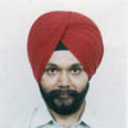Spectrum of polysomnographic abnormalities in children with epilepsy.
Keywords
Abstract
This study sought to evaluate polysomnographic abnormalities in a cohort of 40 children with epilepsy who underwent a sleep study because of various sleep complaints. Retrospective analyses included polysomnographic variables, antiepileptic drugs, type of epilepsy, and seizure control. The subgroup with epilepsy and obstructive sleep apnea syndrome was compared with 11 children who manifested uncomplicated obstructive sleep apnea syndrome. Thirty-three patients (83%) exhibited snoring (42.5%), sleep-disordered breathing (obstructive hypoventilation, 12.5%; obstructive sleep apnea, 20%; and upper-airway resistance syndrome, 7.5%), or periodic limb movements of sleep (10%). Children with poor seizure control demonstrated significantly lower sleep efficiency, a higher arousal index, and a higher percentage of rapid-eye-movement sleep compared with children who were seizure-free or exhibited good seizure control. Patients with epilepsy and obstructive sleep apnea had significantly a higher body mass index, longer sleep latency, a higher arousal index, and a lower apnea-hypopnea index, but significantly more severe desaturation compared with patients with uncomplicated obstructive sleep apnea. A significant proportion of children with epilepsy referred for polysomnography with diverse sleep problems manifest sleep-disordered breathing, including obstructive sleep apnea syndrome.


